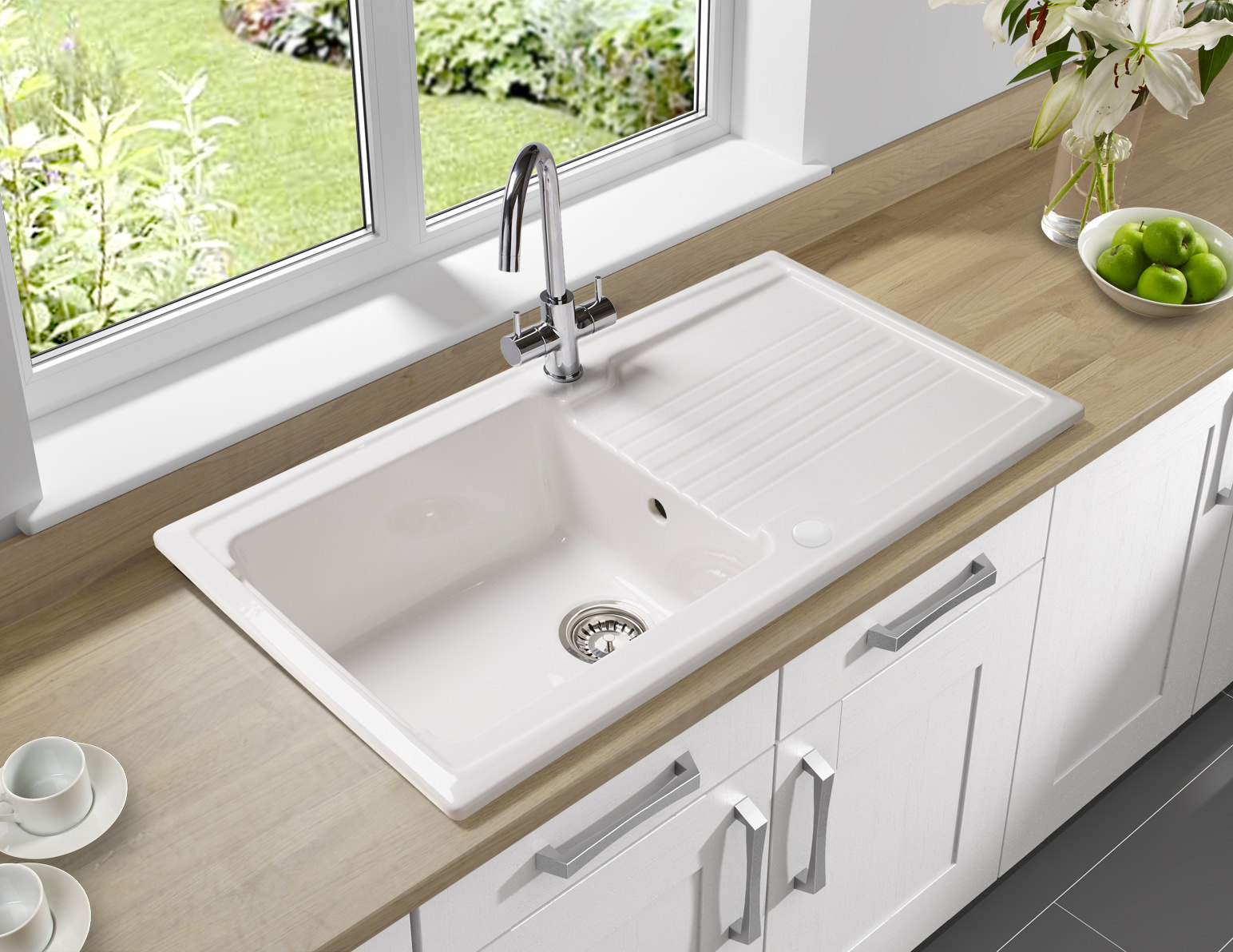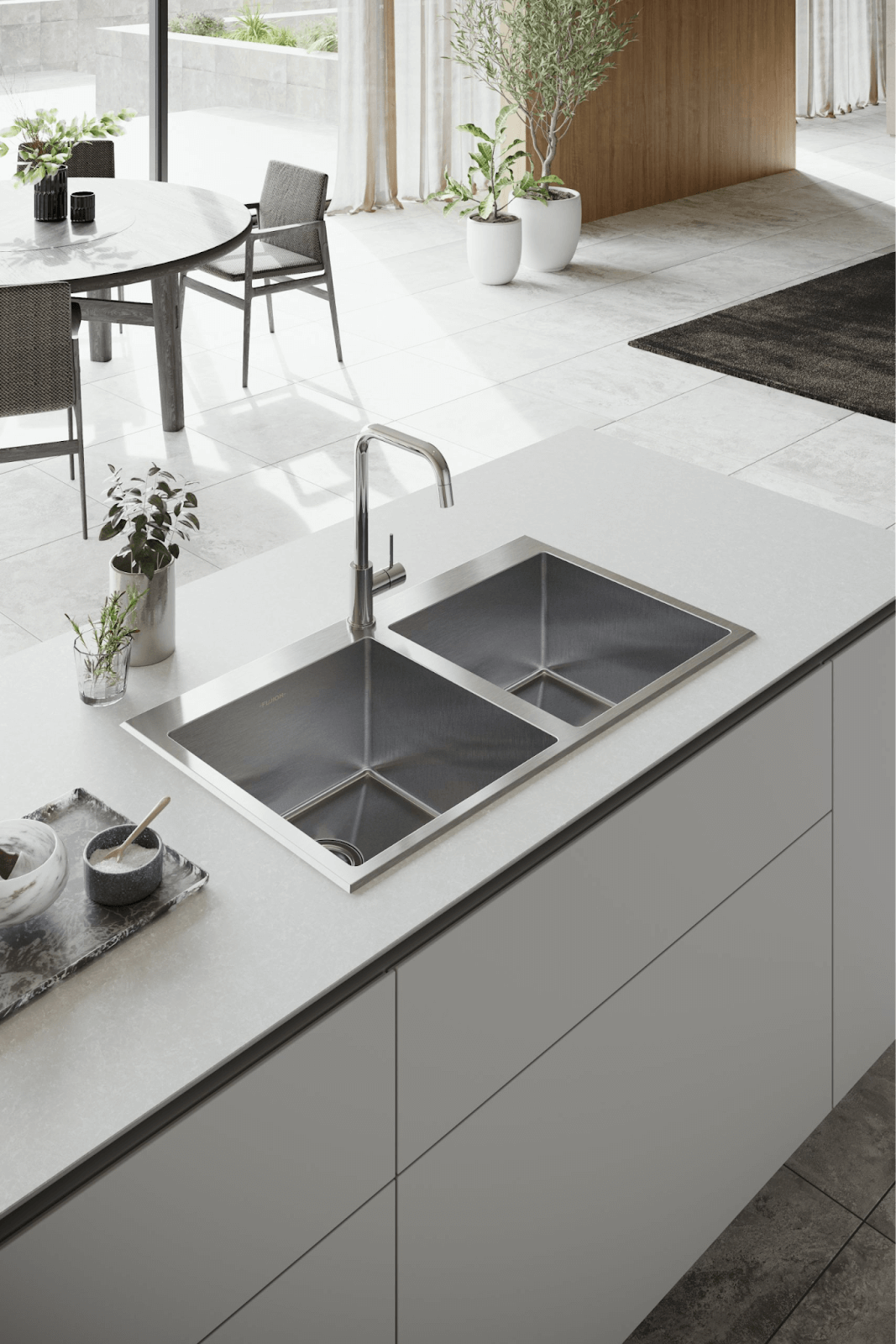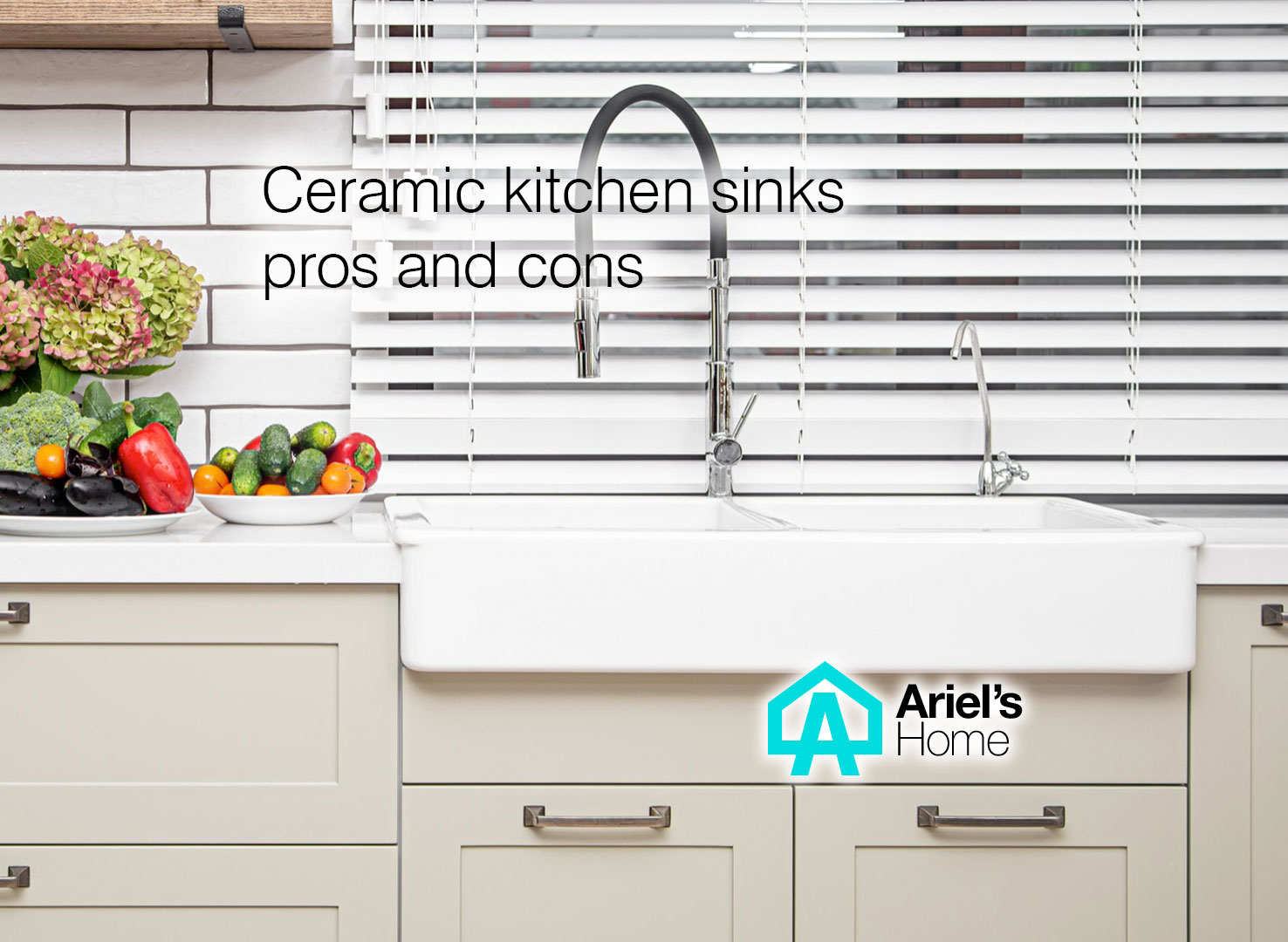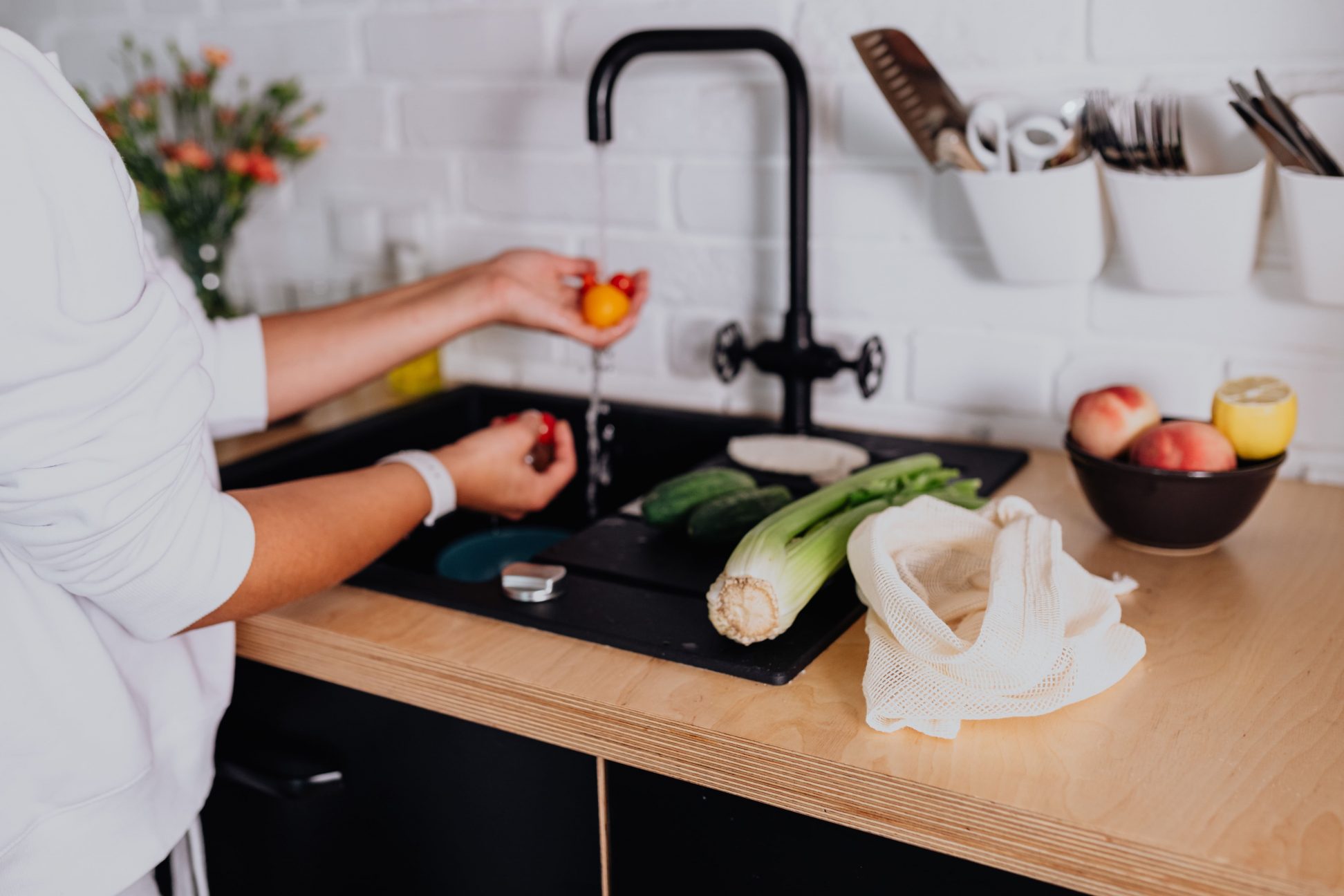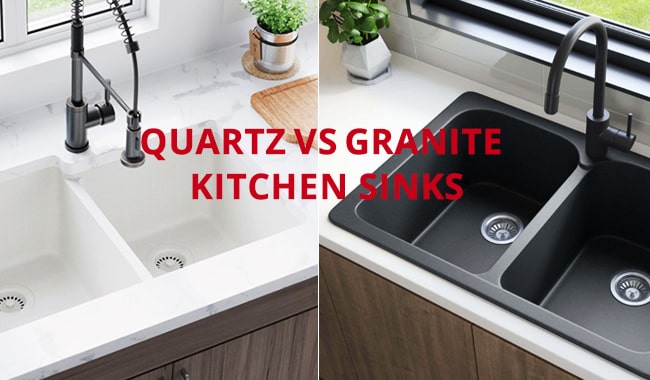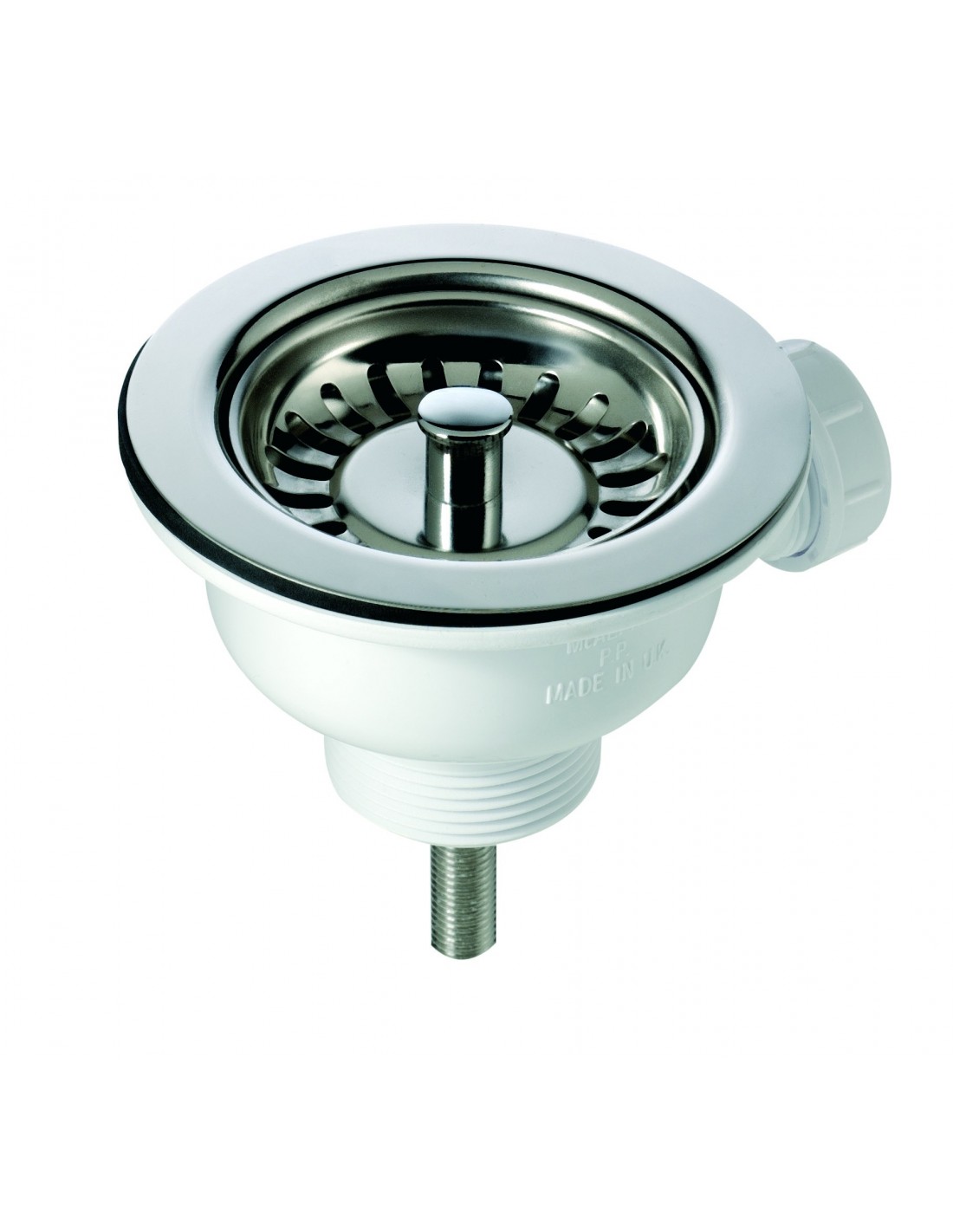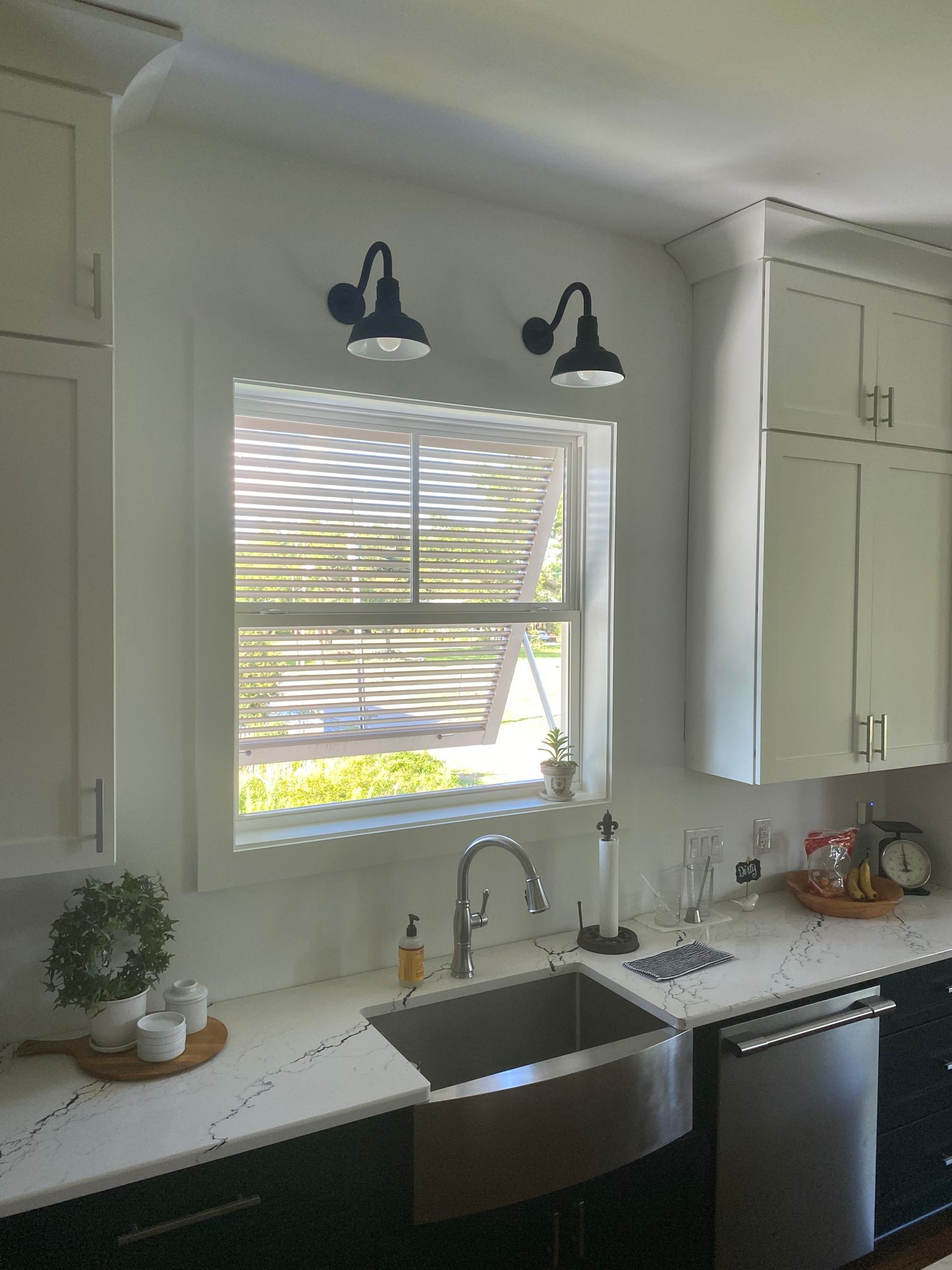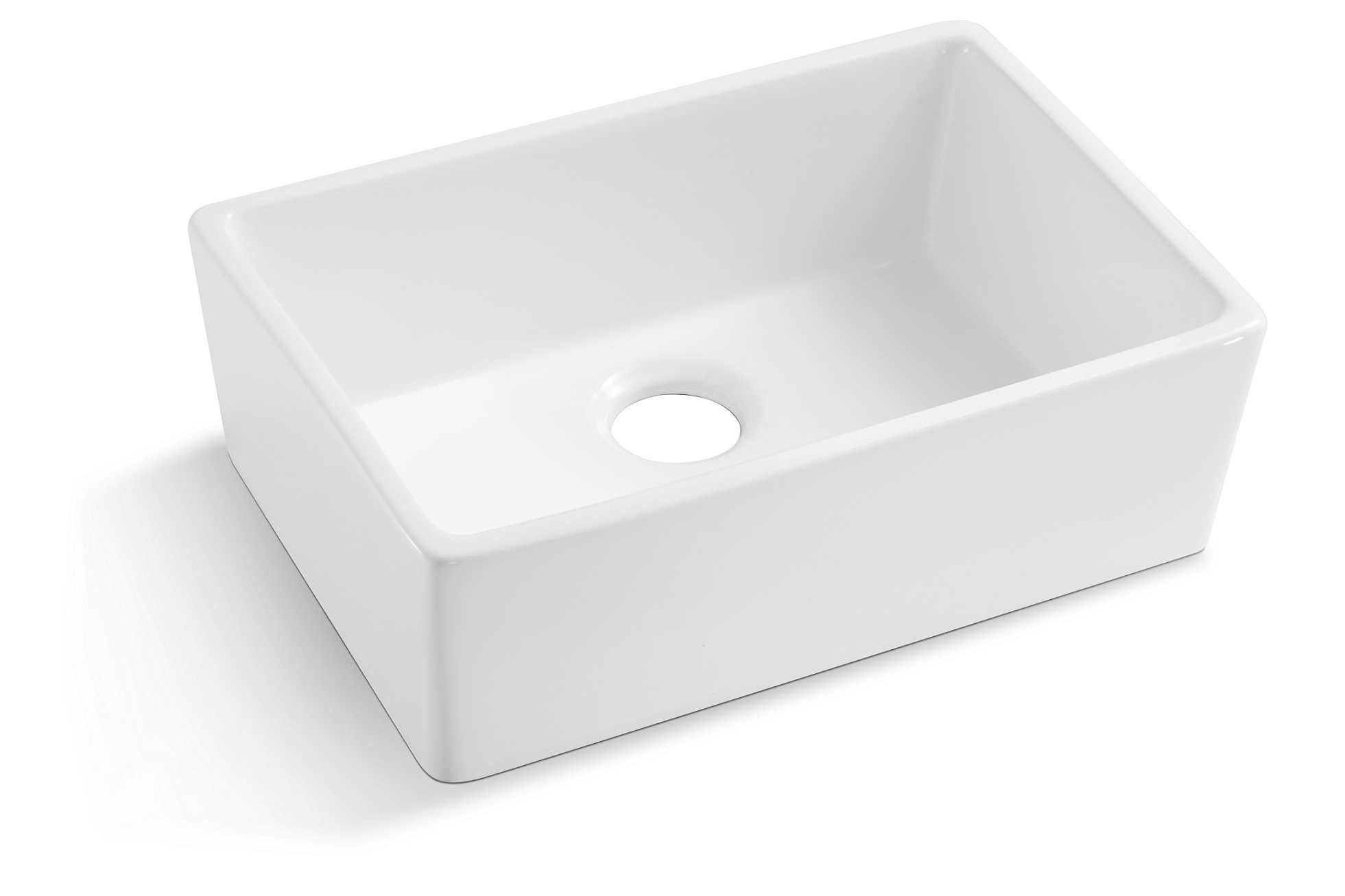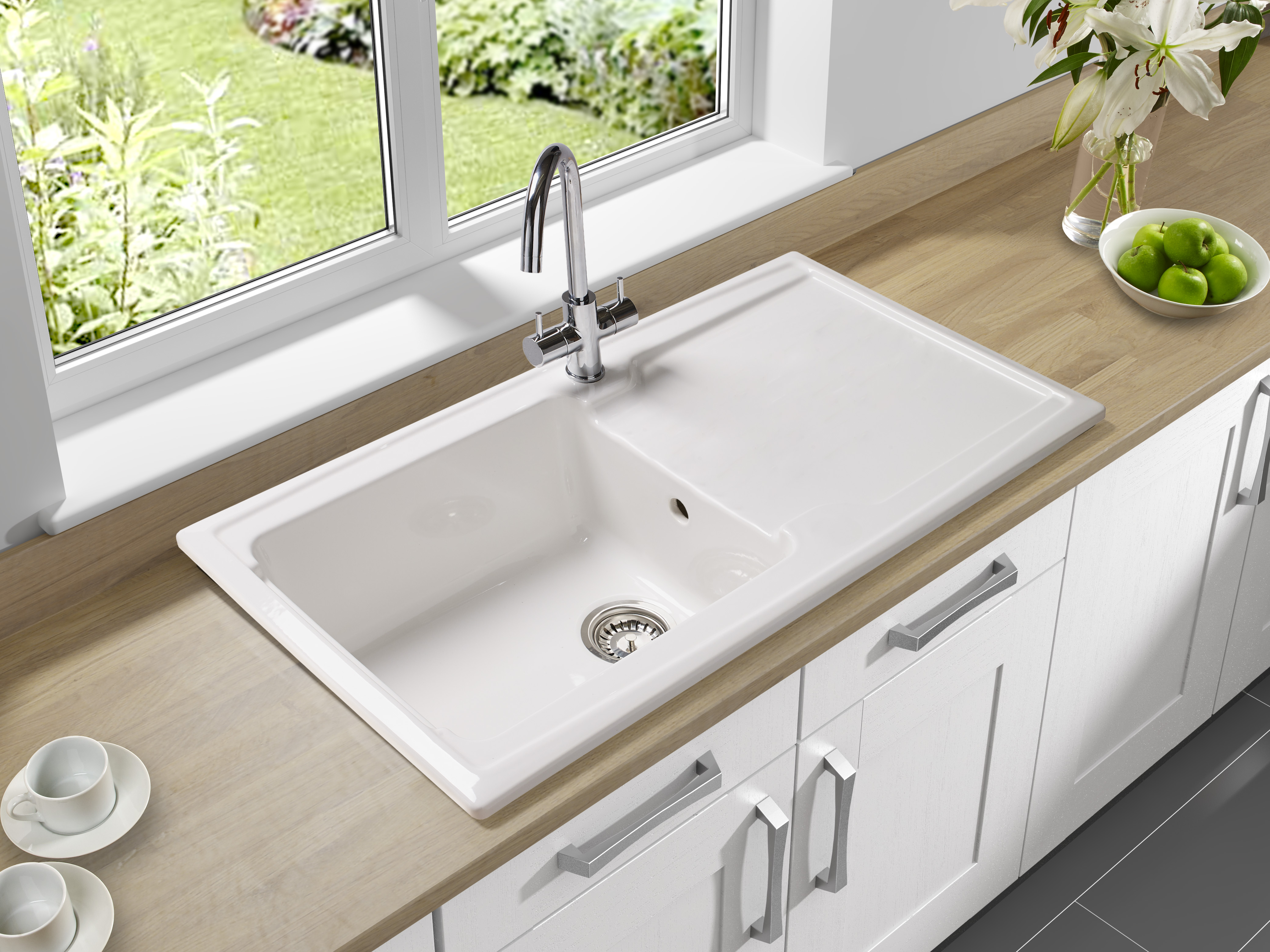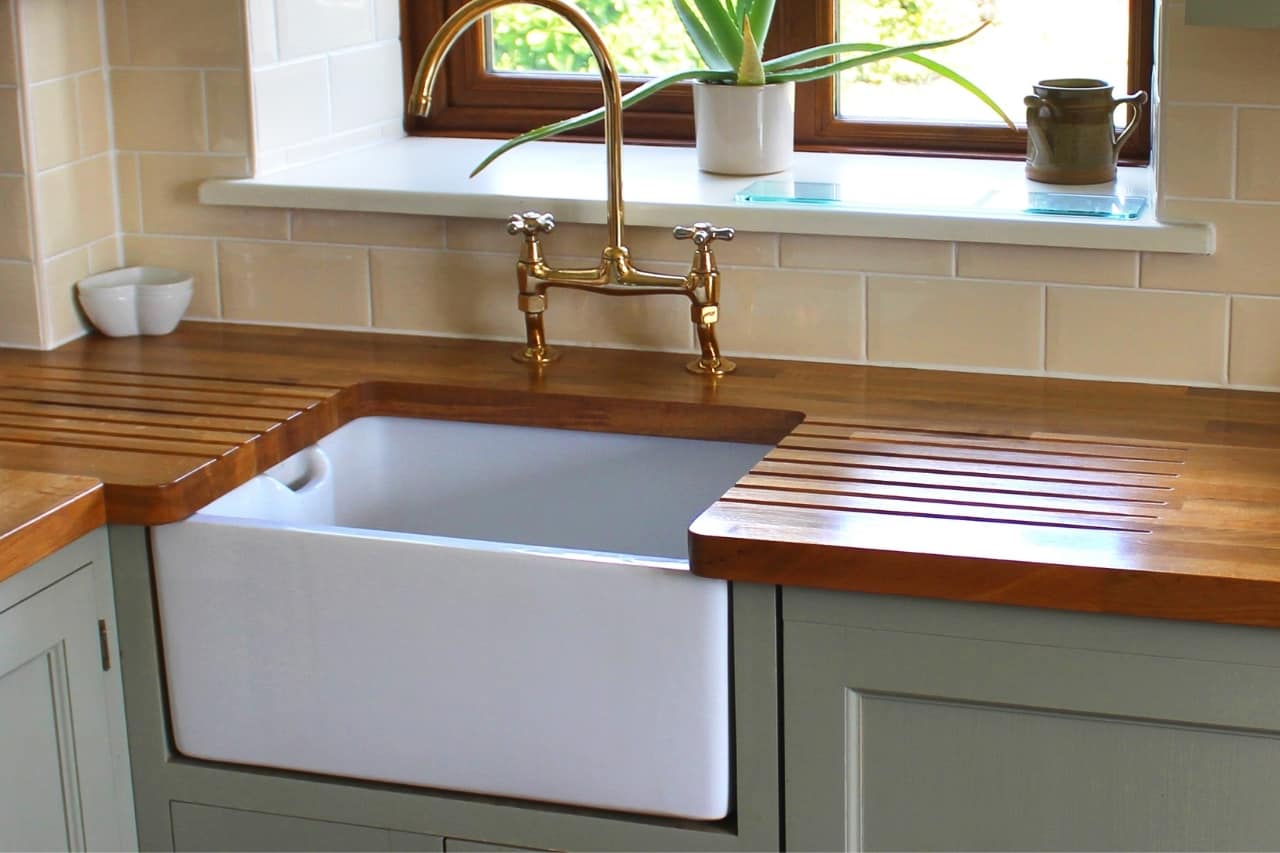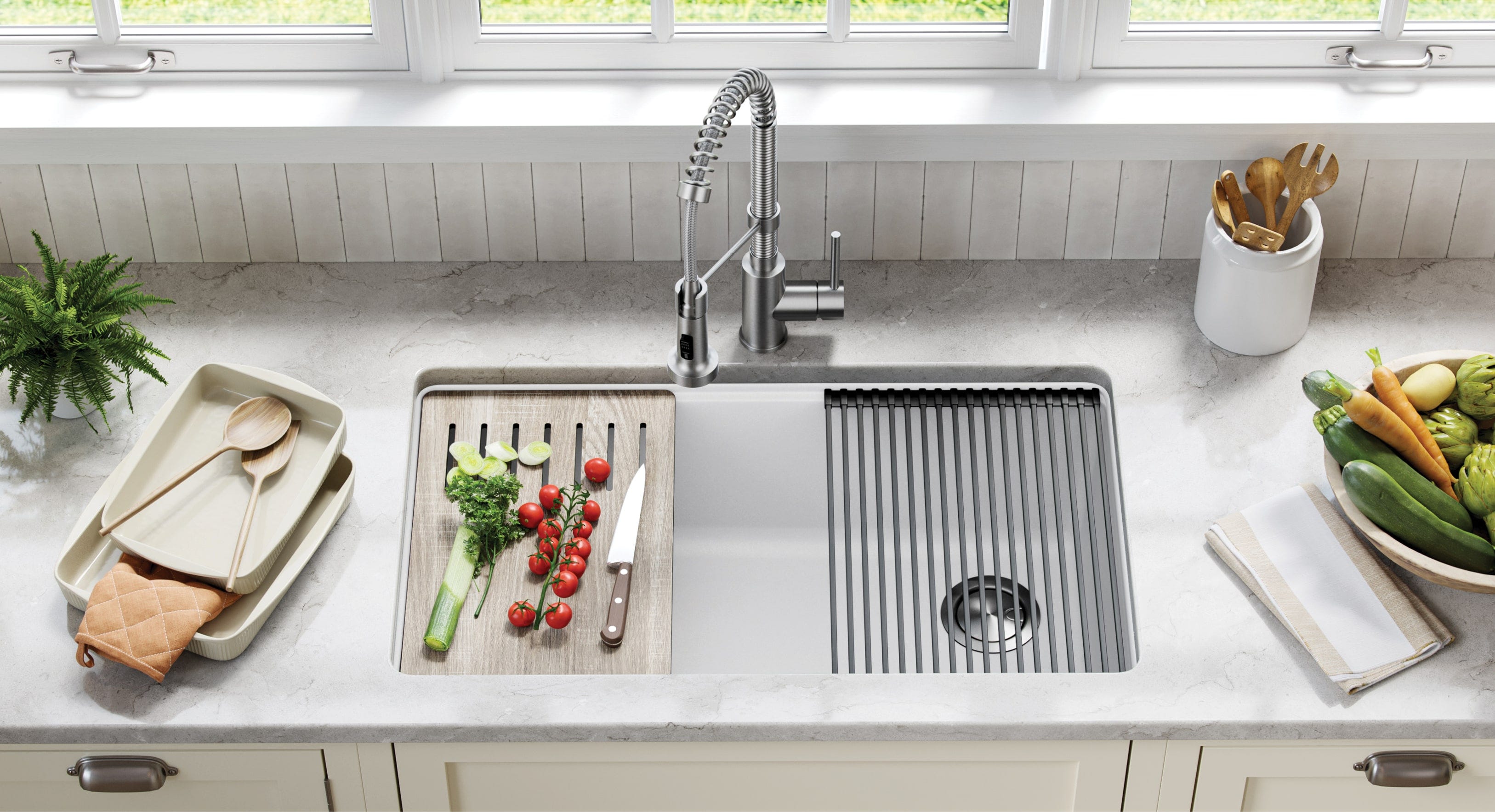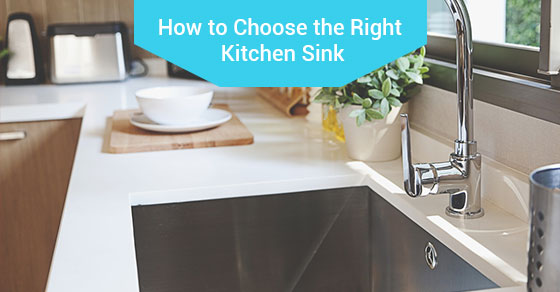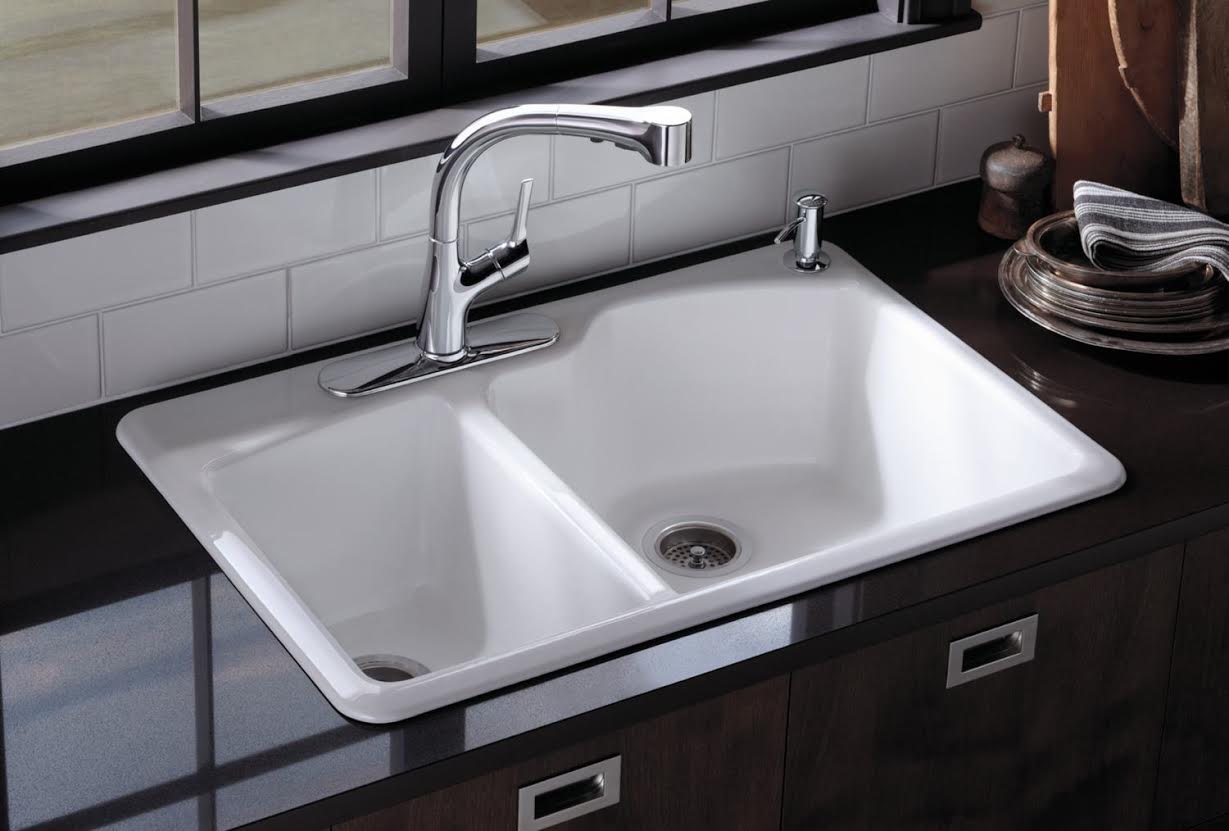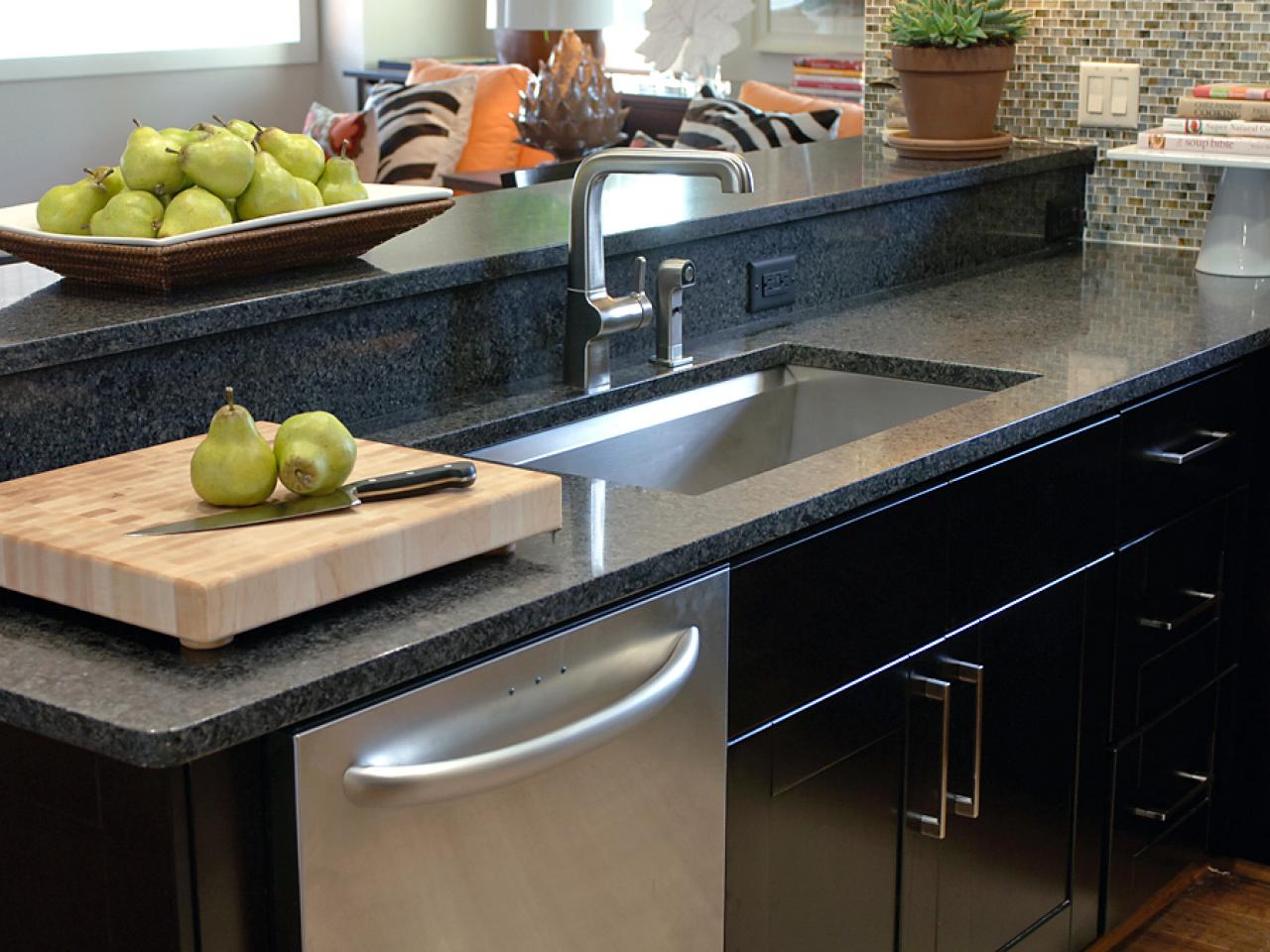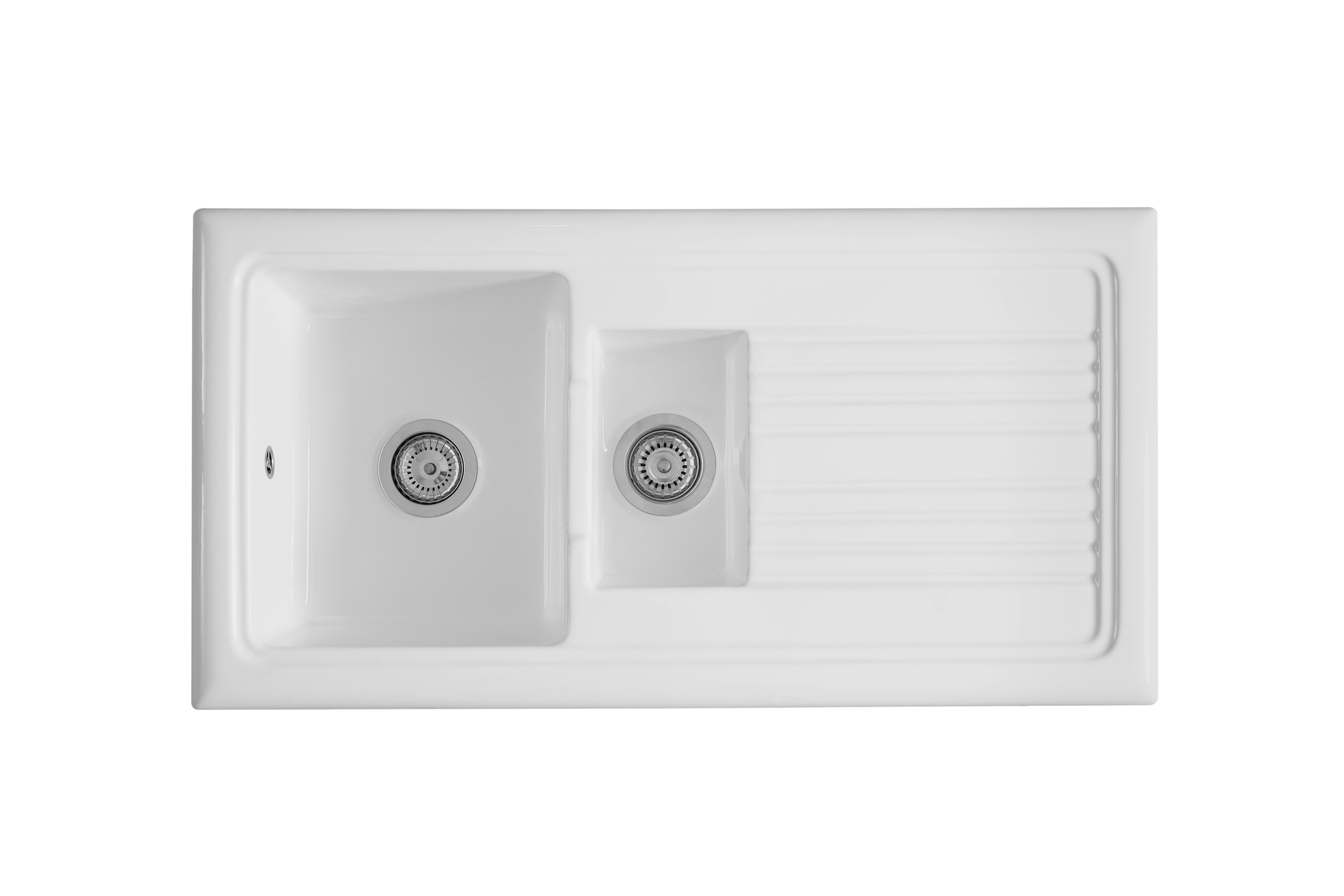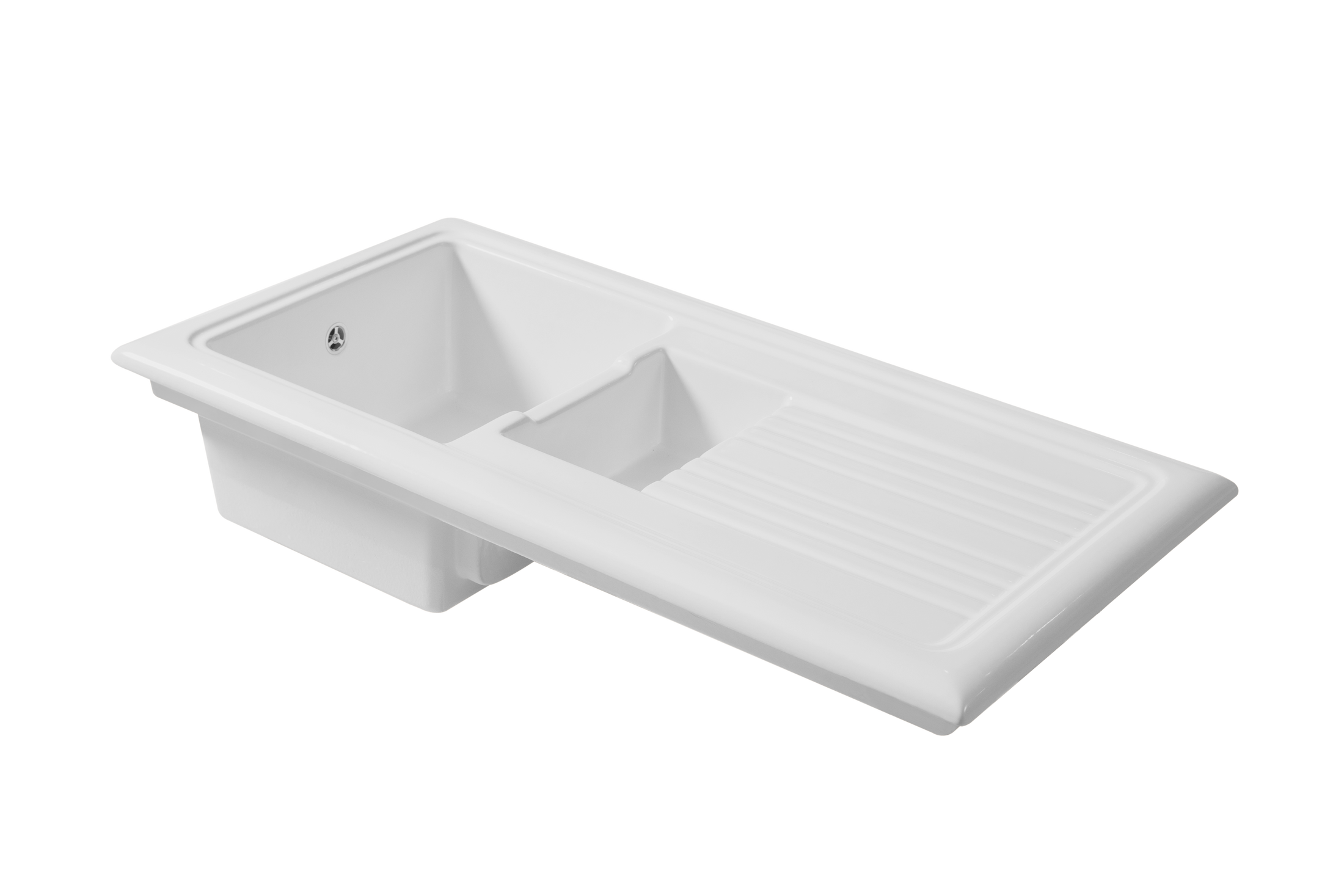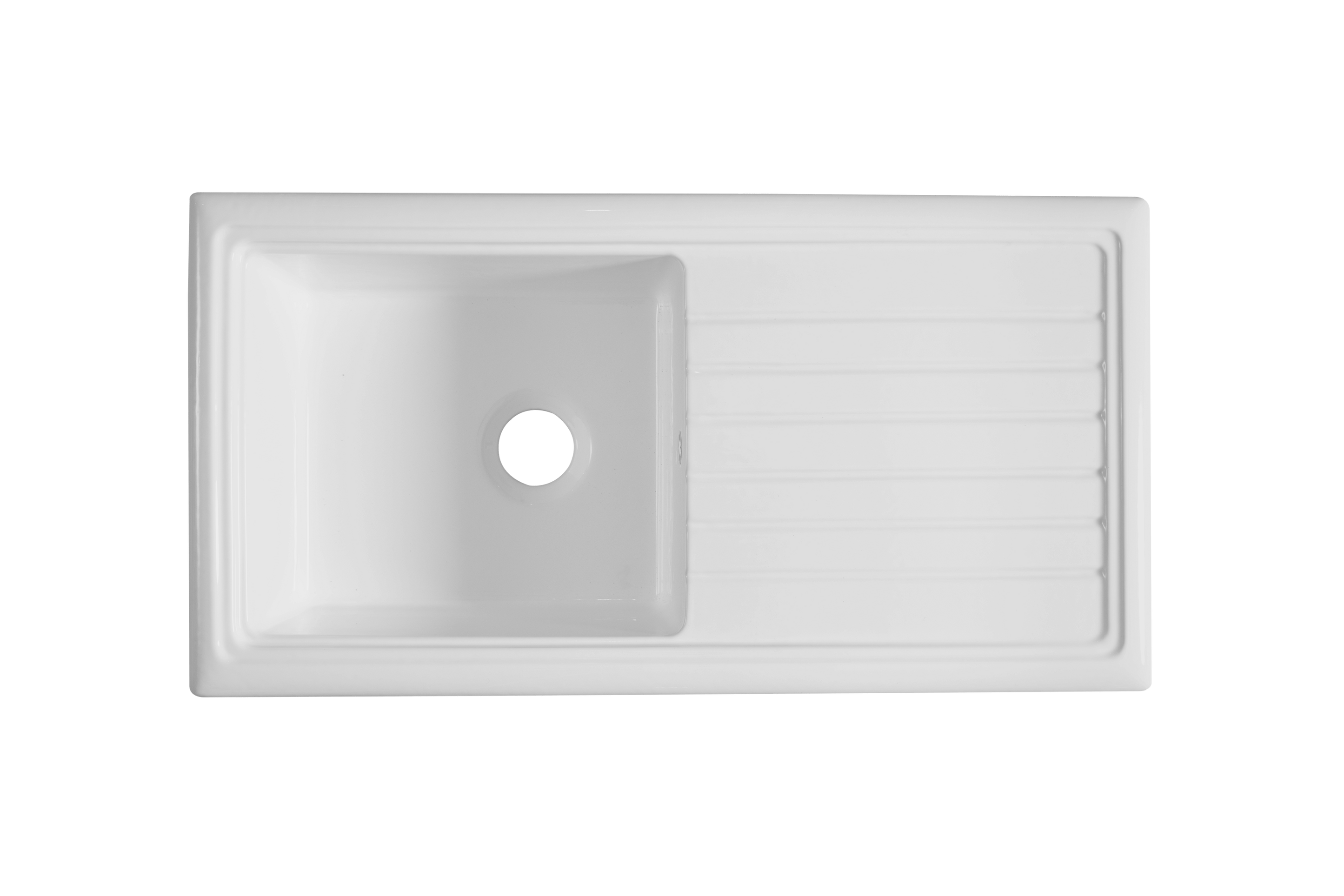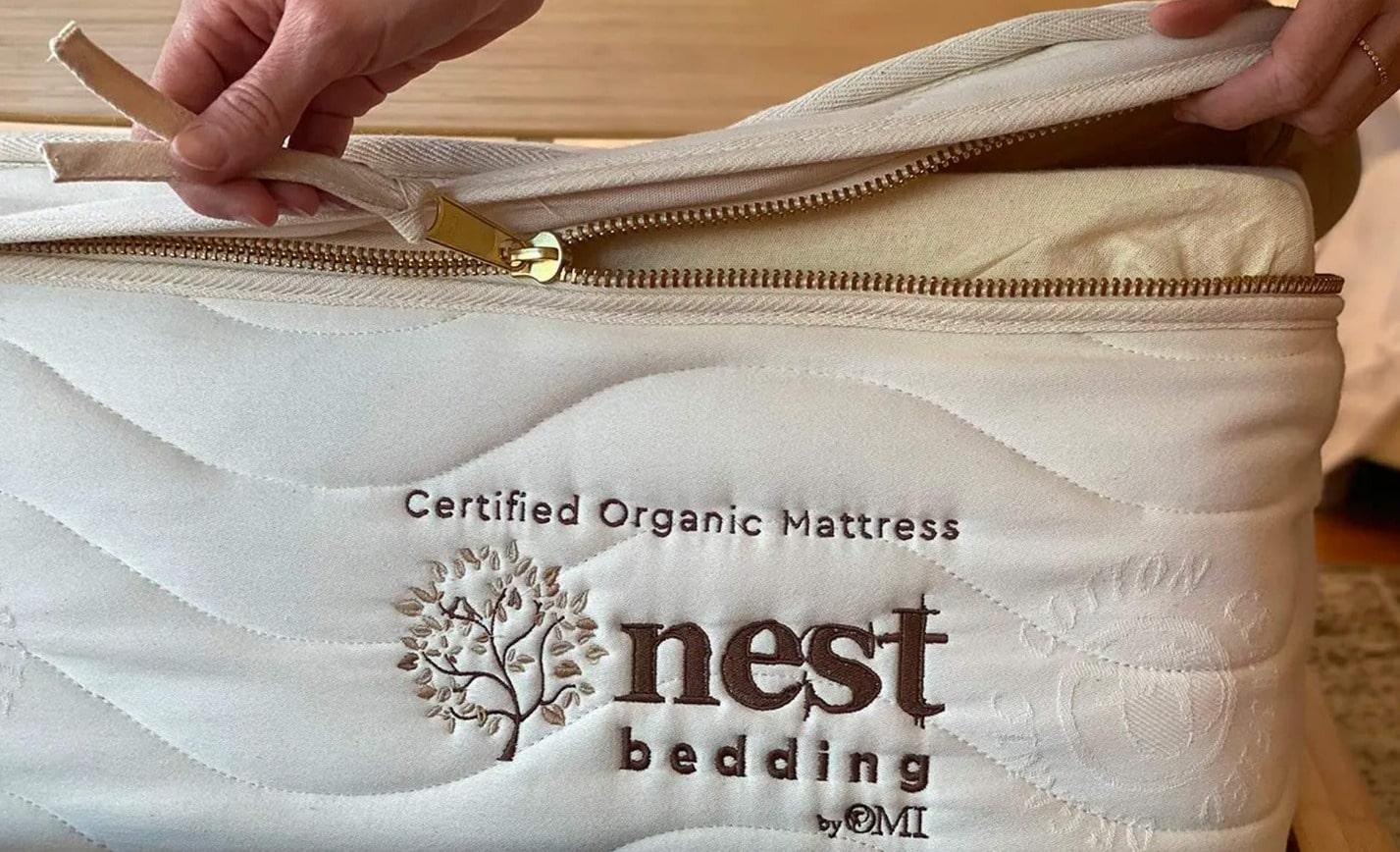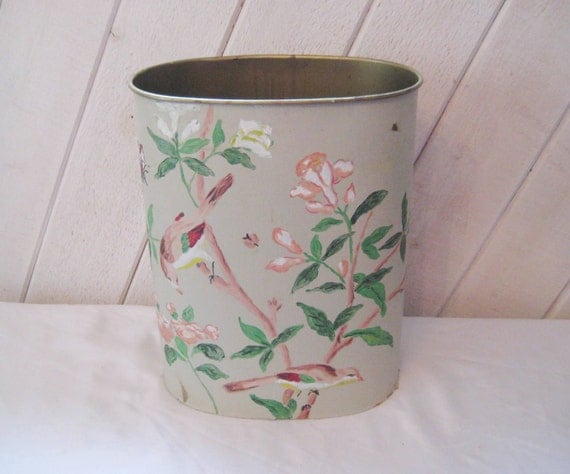1. Durability of Ceramic Kitchen Sinks
Ceramic kitchen sinks have been a popular choice among homeowners for many years due to their durability. Unlike other materials such as stainless steel or granite, ceramic is known for its long-lasting strength and resistance to scratches, stains, and heat. This makes it an ideal option for busy kitchens where the sink is used frequently.
One of the main reasons for the durability of ceramic kitchen sinks is the firing process they go through during production. The high temperatures used in this process make the material extremely hard and resistant to damage. Additionally, ceramic sinks are non-porous, meaning they are less likely to absorb bacteria or develop mold and mildew, making them a hygienic choice for any kitchen.
2. Pros and Cons of Ceramic Kitchen Sinks
As with any material, there are both pros and cons to choosing a ceramic kitchen sink. On the positive side, ceramic sinks are highly durable, easy to clean, and come in a variety of colors and styles to match any kitchen design. They are also relatively affordable compared to other materials like granite or copper.
However, one potential downside of ceramic sinks is that they can be prone to chipping or cracking if heavy objects are dropped on them. They can also be more difficult to install due to their weight and fragility. It is important to consider these factors when deciding if a ceramic kitchen sink is the right choice for your home.
3. How to Care for Your Ceramic Kitchen Sink
To ensure the durability of your ceramic kitchen sink, it is important to properly care for it. Regular cleaning with a non-abrasive cleaner is recommended to prevent buildup and maintain its glossy finish. Avoid using harsh chemicals or scouring pads, as these can cause damage to the surface of the sink.
If you do notice any chips or scratches, it is best to repair them as soon as possible to prevent further damage. There are ceramic repair kits available that can easily fix small imperfections in the sink's surface. It is also important to be gentle when handling heavy objects in the sink to avoid any potential damage.
4. The Benefits of Choosing a Ceramic Kitchen Sink
In addition to its durability, there are many other benefits to choosing a ceramic kitchen sink. As mentioned before, ceramic sinks come in a variety of colors and styles, making it easy to find one that fits your kitchen's aesthetic. They are also non-reactive, meaning they will not discolor or stain from contact with acidic foods or chemicals.
Ceramic sinks are also environmentally friendly, as they are made from natural materials and are recyclable. They are also a good choice for families with young children, as they do not contain any harmful chemicals or toxins that could be absorbed through contact or ingestion.
5. Comparing Ceramic Kitchen Sinks to Other Materials
While ceramic sinks are known for their durability, it is important to consider how they compare to other materials. Stainless steel sinks, for example, may be more resistant to scratches and dents, but they can also be noisy and show water spots more easily. Granite sinks are extremely durable and heat resistant, but they can also be expensive and require regular sealing.
Ultimately, the choice between materials will depend on your personal preferences and needs for your kitchen. However, ceramic sinks offer a good balance of durability, affordability, and style, making them a popular choice among homeowners.
6. How to Choose the Right Ceramic Kitchen Sink for Your Home
When choosing a ceramic kitchen sink, there are a few factors to consider to ensure you are getting the best fit for your home. First, think about the size and shape of your sink and how it will fit into your kitchen layout. You should also consider the depth of the sink and whether it will accommodate your cooking and cleaning needs.
Next, think about the color and style of the sink. Ceramic sinks come in a variety of colors, from classic white to bold colors like black or red. It is important to choose a color that will complement your kitchen's design and stand the test of time. You should also consider the shape and design of the sink, whether you want a traditional rectangular shape or a more modern round or oval shape.
7. Understanding the Different Types of Ceramic Kitchen Sinks
There are three main types of ceramic kitchen sinks: undermount, top mount, and farmhouse sinks. Undermount sinks are installed underneath the countertop for a seamless look, while top mount sinks sit on top of the counter. Farmhouse sinks, also known as apron front sinks, have a large, exposed front that adds a rustic touch to the kitchen.
Each type of sink has its own advantages and it is important to consider which will work best for your kitchen's layout and your personal preferences. Undermount sinks, for example, may be more difficult to install but offer a sleek look and easy cleanup. Top mount sinks are easier to install but can be more difficult to keep clean around the edges. Farmhouse sinks are a statement piece but may require custom cabinetry to fit properly.
8. Tips for Maintaining the Durability of Your Ceramic Kitchen Sink
To ensure your ceramic kitchen sink remains durable and in good condition, there are a few maintenance tips to keep in mind. First, always use a cutting board when preparing food to prevent scratches or chips in the sink's surface. Also, avoid leaving metal objects in the sink for extended periods of time, as they can cause rust stains or scratches.
Regularly cleaning the sink with a non-abrasive cleaner and avoiding harsh chemicals will also help maintain its durability. If you do encounter any minor chips or scratches, be sure to repair them promptly to prevent further damage.
9. Common Misconceptions About Ceramic Kitchen Sinks
There are a few common misconceptions about ceramic kitchen sinks that may deter people from choosing them for their homes. One of these is that they are fragile and prone to cracks and chips. While it is true that ceramic sinks can be damaged if mishandled or exposed to heavy impact, they are still highly durable and resistant to normal wear and tear.
Another misconception is that ceramic sinks are difficult to clean and maintain. However, with proper care and gentle cleaning, ceramic sinks can easily maintain their glossy finish and durability for many years.
10. The Longevity of Ceramic Kitchen Sinks: Real Life Examples
Lastly, it is important to note that ceramic kitchen sinks have a proven track record of durability. Many homeowners have had their ceramic sinks for decades without any major issues or need for replacement. In fact, some older ceramic sinks have become sought-after vintage pieces due to their longevity and timeless style.
Real life examples of the durability of ceramic kitchen sinks can be found in homes all over the world. From busy family kitchens to professional restaurant kitchens, ceramic sinks have proven to be a reliable and long-lasting choice. With proper care and maintenance, your ceramic kitchen sink can also stand the test of time in your home.
Durability is Key for a Long-Lasting Kitchen Sink

Why Ceramic Kitchen Sinks are a Top Choice for Durability
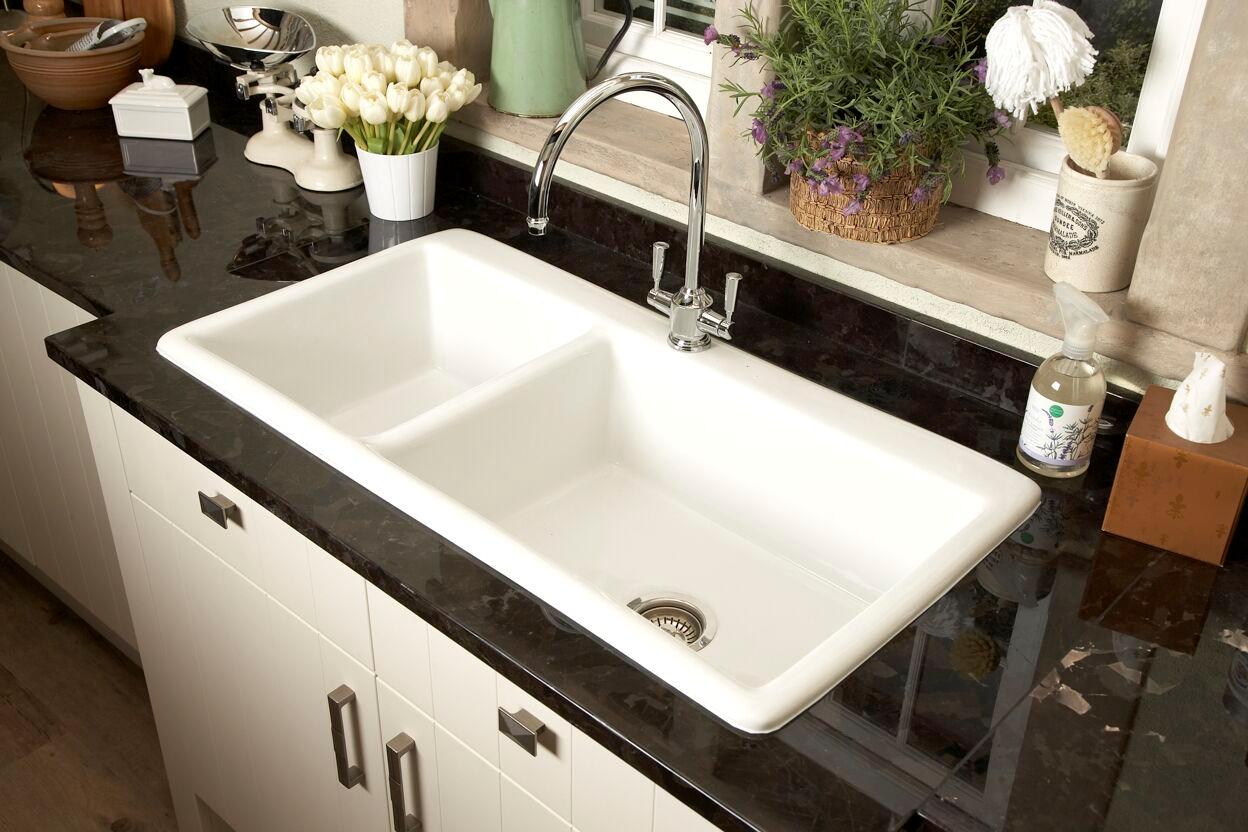 When it comes to choosing a kitchen sink, durability is often at the top of the list for homeowners. After all, the kitchen sink is one of the most frequently used fixtures in a home and needs to withstand daily wear and tear. This is where ceramic kitchen sinks shine. Not only are they stylish and versatile, but they are also highly durable.
Ceramic
is a material that has been used for centuries in various forms, from pottery to tiles. Its durability lies in its composition, which is a combination of clay, minerals, and water that is fired at high temperatures. This process creates a strong and hard surface that is resistant to scratches, stains, and impacts.
Kitchen sink
durability
is also dependent on its ability to withstand extreme temperatures and chemicals. Ceramic sinks are known for their high heat resistance, making them perfect for handling hot pots and pans. They are also resistant to most household chemicals, such as bleach and strong cleaning agents, making them easy to clean and maintain.
But what sets ceramic kitchen sinks apart from other materials in terms of
durability
? The answer lies in their non-porous surface. This means that they do not absorb liquids, preventing bacteria and stains from penetrating the surface. As a result, they are less likely to develop cracks, chips, or discoloration over time.
Additionally, ceramic kitchen sinks are known for their long lifespan. With proper care and maintenance, they can last for decades without losing their shine and color. This makes them a cost-effective choice for homeowners, as they do not need to be replaced frequently.
In conclusion, when it comes to
durable
kitchen sinks, ceramic is a top choice for homeowners. Its strength, heat and chemical resistance, non-porous surface, and long lifespan make it a practical and reliable option. So if you want a kitchen sink that can withstand the test of time, consider adding a ceramic sink to your
house design
plans. Trust us, your future self will thank you.
When it comes to choosing a kitchen sink, durability is often at the top of the list for homeowners. After all, the kitchen sink is one of the most frequently used fixtures in a home and needs to withstand daily wear and tear. This is where ceramic kitchen sinks shine. Not only are they stylish and versatile, but they are also highly durable.
Ceramic
is a material that has been used for centuries in various forms, from pottery to tiles. Its durability lies in its composition, which is a combination of clay, minerals, and water that is fired at high temperatures. This process creates a strong and hard surface that is resistant to scratches, stains, and impacts.
Kitchen sink
durability
is also dependent on its ability to withstand extreme temperatures and chemicals. Ceramic sinks are known for their high heat resistance, making them perfect for handling hot pots and pans. They are also resistant to most household chemicals, such as bleach and strong cleaning agents, making them easy to clean and maintain.
But what sets ceramic kitchen sinks apart from other materials in terms of
durability
? The answer lies in their non-porous surface. This means that they do not absorb liquids, preventing bacteria and stains from penetrating the surface. As a result, they are less likely to develop cracks, chips, or discoloration over time.
Additionally, ceramic kitchen sinks are known for their long lifespan. With proper care and maintenance, they can last for decades without losing their shine and color. This makes them a cost-effective choice for homeowners, as they do not need to be replaced frequently.
In conclusion, when it comes to
durable
kitchen sinks, ceramic is a top choice for homeowners. Its strength, heat and chemical resistance, non-porous surface, and long lifespan make it a practical and reliable option. So if you want a kitchen sink that can withstand the test of time, consider adding a ceramic sink to your
house design
plans. Trust us, your future self will thank you.



